Small Business Cybersecurity: Your 2024 Playbook
Last Updated on April 8, 2024
The Small Business Cybersecurity Guide: Essential Strategies for 2024
Forget giant corporations making headlines; cybercriminals are increasingly turning their attention towards small businesses. Why? Because small businesses often represent easy targets with outdated defenses and a limited understanding of the threats they face. The year 2024 has seen a rise in sophisticated attacks, from AI-driven malware to devastating ransomware campaigns.
But it's not all doom and gloom! Your business can significantly reduce its risk by taking a proactive approach to cybersecurity. This guide will break down the essentials of small business cybersecurity in 2024, providing practical strategies and actionable insights. We'll focus on the most critical aspects, ensuring you can make informed decisions and build a solid foundation of security for your business.
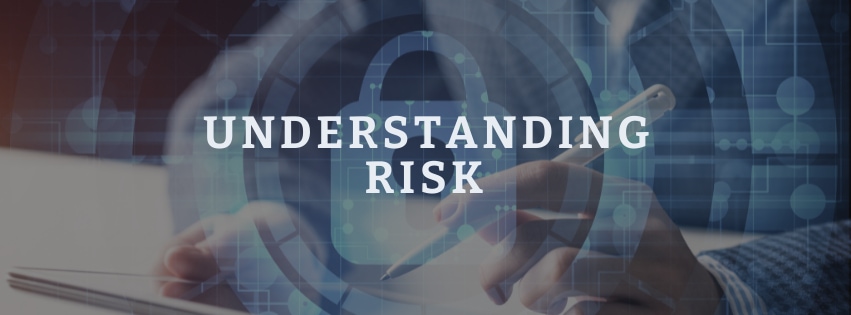
Table of Contents
Building a Foundation of Security
Defining Your Security Strategy
Small businesses often find cybersecurity intimidating, but it doesn't have to be. Before diving into technical details, let's lay a solid foundation. Defining a clear security strategy is vital. This involves a few key steps:
- Risk Assessment: Every business is unique. Identify your most valuable assets – customer data, financial information, intellectual property – and the potential threats against them. A risk assessment is your roadmap of where to focus your security efforts.
- Business Impact Analysis: Think beyond the immediate cost of a cyberattack. Calculate the potential fallout: lost revenue, legal fees, and damage to your reputation. This analysis helps you communicate why cybersecurity matters to stakeholders and justify investments.
- Budget and Resource Allocation: Cybersecurity isn't one-size-fits-all. Align your spending with the risks your business faces. Consider technology costs and the time and expertise required for effective security measures.
Documenting Your Assets
Imagine trying to protect your home without knowing what you own or where your valuables are stored. Cybersecurity works the same way! The first step to securing your business is identifying and documenting your assets. Here's a comprehensive approach:
- The Starting Point: Begin with the obvious: computers, servers, smartphones, network equipment (routers, firewalls), and the network they're connected to. Don't forget cloud-based services (email, file storage, customer relationship management platforms) that hold sensitive company data. Include any software licenses and subscriptions you rely on.
- Continuous Discovery: Asset tracking is an ongoing process. As your business grows and technology changes, so will your digital footprint. Implement processes to update your asset inventory regularly and include:
- Automated Tools: Consider using network scanning tools to aid in identifying devices connected to your network.
- Employee Input: Encourage employees to report new devices or software they use.
- Prioritizing Critical Assets: Let's be practical: protecting everything with equal intensity is unrealistic, especially for small businesses. Think “what if” scenarios: What data would be most damaging if stolen (customer information, financial records, intellectual property)? What systems are essential for day-to-day operations? Prioritize securing these top-tier assets.
Why go the extra mile?
- Informed Decision-Making: Knowing your assets enables strategic security investments and prioritizing your protection efforts.
- Compliance: Many regulations (HIPAA, PCI, and DSS) require businesses to maintain detailed asset inventories.
- Incident Response: In the unfortunate event of a cyberattack, an up-to-date asset list helps you quickly identify what's impacted and take containment actions.
Vulnerability Management
Think of software vulnerabilities as unlocked doors for cybercriminals. These flaws in code can be exploited to gain unauthorized access, steal data, or disrupt your systems. Vulnerability management is a continuous battle to keep those doors shut. Here's what you need to know:
- The Importance of Patching: Software vendors regularly release patches to fix vulnerabilities. Applying these patches promptly is one of your most powerful defenses. Neglecting updates leaves you exposed.
- Patching Frequency: While a monthly patching schedule was once the norm, the modern threat landscape often demands faster action. Aim for weekly or bi-weekly patch cycles if possible. Automated tools can streamline this process.
- Addressing Legacy System Concerns: What if you have older systems that no longer receive security updates? This presents a challenge. Consider isolating these systems on a separate network segment to reduce risk or invest in virtual patching solutions for continued protection.
Tools to Aid You:
- Vulnerability Scanners: Solutions like Tenable Nessus proactively scan your network to identify known vulnerabilities. These tools help you prioritize patches for the flaws that pose the most significant risk to your business.
- Verification: It's not enough to just install patches. Verify that they've been applied successfully.
Important Reminders: It's a process, and vulnerability management is ongoing, not a one-time fix. Incorporate regular vulnerability scans and patch updates as standard operating procedures.

Core Protections and Best Practices
Antivirus and Anti-Malware Software
Antivirus and anti-malware software remain a frontline defense against known cyber threats. They scan your system for malicious code and quarantine or remove harmful files. Here are key considerations for small businesses:
- The Essential Baseline: Consider antivirus/anti-malware a non-negotiable. Even free solutions offer basic protection. However, if your budget allows, explore more advanced options.
- Considering EDR and XDR:
- EDR (Endpoint Detection and Response): EDR goes beyond traditional antivirus, focusing on analyzing and correlating threats on your endpoints (computers, servers). It's ideal for businesses facing advanced threats.
- XDR (Extended Detection and Response): XDR takes a broader view, analyzing threats across your entire network and providing a centralized response platform.
- Microsoft Defender's Role: If you utilize Microsoft 365, Defender for Business offers reasonable protection and is integrated into the operating system. Depending on your business risk, it may suffice for a start.
Top Software Tools
- Traditional Antivirus: Bitdefender, Norton, Kaspersky, ESET NOD32
- EDR/XDR: CrowdStrike Falcon, SentinelOne, Sophos Intercept X, VMware Carbon Black
Important Note: Antivirus/anti-malware shouldn't be your sole protection. Layered security is key!
Robust Data Backups
Ransomware encrypts your data, demanding payment for the decryption key. Backups are your insurance policy. Here's what you need to know:
- Your Defense Against Ransomware: Cyberattacks can still happen even with the best prevention. Regular backups allow you to restore data without paying criminals.
- Benefits of Multiple Backup Types: Combine the strengths of on-site and cloud backups with the 3-2-1 rule:
- Three copies of your data
- Two different storage media (e.g., hard drive + cloud)
- One copy off-site (for protection against fire or natural disaster)
- Mitigating Insider Threats: Ensure your backup systems have robust access controls to prevent an employee from deliberately sabotaging your recovery options.
Remember: Test your backups regularly to ensure data can be successfully restored!
Password Management
Passwords remain the first line of defense for most online accounts. Unfortunately, common password habits significantly increase security risks. Let's change that:
Password Best Practices:
- Length: Longer is stronger. Aim for at least 12-15 characters.
- Complexity: Use a mix of uppercase, lowercase, numbers, and symbols. Avoid dictionary words or easily guessable patterns (e.g., Password123!)
- Uniqueness: A unique password for every account is essential. If a single service is compromised, it won't affect your other accounts.
Password Managers to the Rescue: Trying to remember dozens of complex passwords is unrealistic. Password managers (like LastPass, 1Password, and Dashlane) securely store and generate strong passwords for you. You only need to remember your master password for the manager.
Password Change Schedules: While rotating passwords every 90 days was once the gold standard, modern recommendations focus more on avoiding compromised passwords. However, periodic updates are still a good practice to mitigate the risks of undetected breaches.
Multi-Factor Authentication (MFA)
MFA adds a powerful layer of security by requiring something you know (your password) and something you have (like a code on your phone) to log in. Here's what you need to know:
- The Importance of Adding an Extra Layer: Even strong passwords can be stolen via phishing attacks. MFA significantly reduces the risk of unauthorized access.
- App-based vs. SMS-based MFA: App-based MFA (using authenticator apps like Google Authenticator or Authy) is generally considered more secure than SMS-based methods (receiving codes via text). Hacker techniques exist to intercept SMS codes.
- Starting with MFA before 3-Factor: While adding a biometric factor (fingerprint, facial recognition) enhances security further, start with implementing solid MFA protocols across your business. Consider 3-factor authentication for highly sensitive systems later.
Key Points
- MFA Everywhere: Implement MFA on email, cloud-based services, remote access systems, and any accounts containing sensitive information.
- Educate Your Staff: Explain the importance of MFA and how to use it. This technology is highly effective only when adopted by everyone in your organization.

Proactive Security and Resilience
Ongoing Security Awareness Training
Your employees are your strongest defense against cyber threats – and potentially your weakest link. Ongoing security awareness training transforms staff into active protectors of your business. Here's why it's vital:
- Everyone's Role in Security: Cybercriminals often exploit human error rather than complex technical vulnerabilities. Train employees to recognize the common tactics used in phishing emails, social engineering scams, and other threats.
- Pre-training for Future Changes: Introduce cybersecurity concepts early. As you implement new security measures, employees will already have a foundation, making the transition smoother.
- Leadership Sets the Tone: If executives don't prioritize security awareness, neither will employees. Leaders should visibly participate in training and reinforce its importance. Make cybersecurity part of your company culture.
Key Elements of Effective Training:
- Relevant and Engaging: Dull lectures won't make an impact. Use real-world examples, interactive scenarios, and even gamification to keep training sessions interesting.
- Beyond Phishing: While phishing is a major threat, cover various aspects of security, like secure password practices, handling sensitive data, and reporting suspicious activity.
- Regular and Ongoing: One-off training isn't enough. Schedule regular sessions and utilize micro-learning (brief, targeted training modules) to reinforce key concepts.
Remember: Training is an investment in your business's resilience. Empowered employees are less likely to fall for scams, reducing the risk of costly data breaches.
Protecting against Phishing Attacks
Phishing scams are a relentless threat to businesses of all sizes. Cybercriminals impersonate legitimate entities (banks, software vendors, colleagues) via email, text messages, or fake websites to trick victims into giving up sensitive information or clicking malicious links. In 2024, phishing attacks have grown more sophisticated, making them harder to spot. Here's how to protect your business:
- Phishing Simulations: One of the most effective ways to train employees is through realistic phishing simulations. Services exist that send safe yet convincing fake phishing emails to test your staff. Those who fall victim are immediately provided with training about what to watch out for.
- Email Filtering and DMARC: Technical measures are important too. Implement strong email spam filters and the DMARC protocol (Domain-based Message Authentication, Reporting, and Conformance) to help block fraudulent emails from reaching your inbox.
- Identifying Phishing Tactics in 2024: Equip your employees with the knowledge to spot the latest red flags:
- Highly Targeted: Phishing attacks are no longer just generic mass emails. They might reference specific job titles and projects or use your company's logo and branding.
- Sense of Urgency: Phishing often creates a false sense of immediacy (“Your account will be deleted!”). Train staff to pause and verify requests, especially unusual ones.
- Personalized Lures: Attackers use publicly available social media information to craft highly personalized phishing attacks. Educate employees on how to be mindful of what they share online.
Remember: Even one employee falling victim could compromise your entire network. Ongoing awareness and vigilance are essential!
Security Assessments and Risk Reduction
How do you know if the security measures you've implemented are working? Are there gaps you might be overlooking? Security assessments provide crucial insights, helping you make informed decisions to protect your business.
- Understanding Security Assessments: A security assessment systematically evaluates your technology infrastructure, policies, and practices against a recognized framework to identify vulnerabilities and potential risks. Think of it as a ‘security checkup‘ for your business.
- Utilizing Frameworks (NIST, CIS): The NIST Cybersecurity Framework and the CIS Controls provide a structured approach to identifying and prioritizing security controls. Using a recognized framework helps ensure your assessment is comprehensive and based on industry best practices.
- Focusing on the Most Critical Controls: Not all security controls are equal. A seasoned cybersecurity professional will help you prioritize the most important actions aligned with your business risks. A limited budget doesn't mean you can't benefit from an assessment!
- Aligning Security with Risk Tolerance: Every business has a unique risk appetite. A security assessment should consider your financial position, the sensitivity of your data, and your regulatory requirements to recommend security measures that are appropriate and proportionate to the specific threats you face.
Types of Security Assessments
- Vulnerability Scans: Automated tools scan your network to identify known software vulnerabilities (as discussed earlier).
- Penetration Testing: Ethical hackers attempt controlled “attacks” on your systems to discover vulnerabilities a real attacker could exploit.
- Risk Assessments: Focus on the broader business impact of potential security threats, helping you prioritize your efforts based on likelihood and potential damage.
- Compliance Assessments: If your business needs to comply with regulations like HIPAA, PCI DSS, or GDPR, a compliance assessment will measure your security posture against these specific requirements.
Important Considerations:
- Start Small: Don't feel pressured to conduct complex assessments initially. Consider a focused assessment of a critical asset or process.
- Engage Professionals: Especially for in-depth assessments, the expertise of a cybersecurity professional will ensure the process is thorough and provides actionable insights.
- It's Not Once-and-Done: Security assessments should be performed regularly as your business grows and the threat landscape evolves.
Incident Response Planning
Even with the best prevention, cyberattacks can still happen. That's why having a well-defined incident response plan is essential. This plan outlines your team's steps to contain a breach, minimize damage, and restore operations quickly. Here's why you can't afford to leave this to chance:
- Response and Recovery Steps: A comprehensive plan details who does what, in what order, and how to communicate both internally and with external parties (e.g., law enforcement, customers). Thinking through these steps in a calm state makes a chaotic situation far more manageable.
- Regularly Testing Your Plan: You must practice your incident response plan like a fire drill. Tabletop exercises allow you to identify gaps and refine your procedures in a less stressful environment.
- Legal and Compliance Considerations: Data breach notification laws may require you to disclose a cyber incident to customers, partners, or regulatory bodies within a specific time frame. Understanding these legal obligations in advance and incorporating them into your plan will help you avoid costly penalties and reputational damage.
Key Elements of an Effective Incident Response Plan
- Incident Response Team: Identify key personnel from different departments (IT, HR, legal, PR) and define their roles.
- Communication Protocols: Establish clear channels for reporting incidents, notifying stakeholders, and coordinating actions.
- Forensics and Containment: Plan how you'll collect evidence to understand the breach and isolate affected systems to prevent the attack from spreading.
- Recovery Procedures: Document how you'll restore your systems, data, and operations in a prioritized manner to minimize downtime.
Remember: Incident response planning isn't just about mitigating damage. It also helps you learn from an attack and strengthen your defenses for the future.

Advanced Considerations for 2024
As cyber threats evolve, businesses willing to take their security to the next level must consider additional strategies. While not every business will require these right away, it's good to be aware of these options for the future.
Implementing Zero Trust
The traditional “castle and moat” approach to security – where everything inside your network perimeter is trusted – is outdated. The Zero Trust model operates under the assumption of “never trust, always verify.” It applies granular access controls based on the identity of the user, the device they're using, what data they're accessing, and the context of the request. This significantly reduces the risk of attackers using compromised credentials to move freely within your network. Implementing Zero Trust often involves micro-segmentation of your network as well as careful identity and access management solutions.
Securing Remote and Cloud Environments
Securing environments outside your direct control has become critical with the rise of remote work and cloud adoption. This includes using strong VPN solutions for encrypted connections to your office network for remote workers. In terms of cloud security, consider adopting a shared responsibility understanding: your cloud provider handles the security of the cloud while you're still responsible for security in the cloud. This emphasizes the importance of properly configuring your cloud services, managing user access rights, and encrypting sensitive data.
Vendor and Third-Party Risk Management
The interconnected nature of business today means your security is often as strong as your weakest vendor. Before sharing sensitive data with a third party, conduct thorough risk assessments of their security practices. Incorporate security requirements into your contracts and monitor vendor compliance regularly. If a third-party partner suffers a data breach, it could directly impact your business.
Important Note: Advanced security measures often require specialized knowledge and resources. Consult with a cyber security professional to determine which strategies fit your business needs and develop a roadmap for gradual implementation.
Conclusion
Cybersecurity can seem daunting, especially for small businesses with limited resources. However, by understanding the core threats and focusing on the most impactful actions, you can significantly reduce your risk and protect your business in 2024 and beyond.
Key Takeaways
- Start with the fundamentals: Implement strong passwords, antivirus, and backups, and prioritize security updates.
- Train your employees: Ongoing security awareness training makes your staff a powerful line of defense.
- Assess and Adapt: Conduct regular security assessments to identify gaps and adjust your strategies.
- Plan for the worst: A well-developed incident response plan minimizes the damage of a potential breach.
Remember: Cybersecurity is an ongoing journey, not a destination. The threat landscape will continue to evolve, but by establishing a strong security foundation and staying vigilant, you will better position your business to withstand the challenges.
Resources for Further Guidance
- National Institute of Standards and Technology (NIST) Cybersecurity Framework: https://csrc.nist.gov/
- Cybersecurity and Infrastructure Security Agency (CISA): https://www.cisa.gov/
- Small Business Administration (SBA) Cybersecurity Resources: https://www.sba.gov/business-guide/manage-your-business/strengthen-your-cybersecurity
By prioritizing cybersecurity, you're not just protecting your business but investing in its future. Empower yourself to stay ahead of the curve.
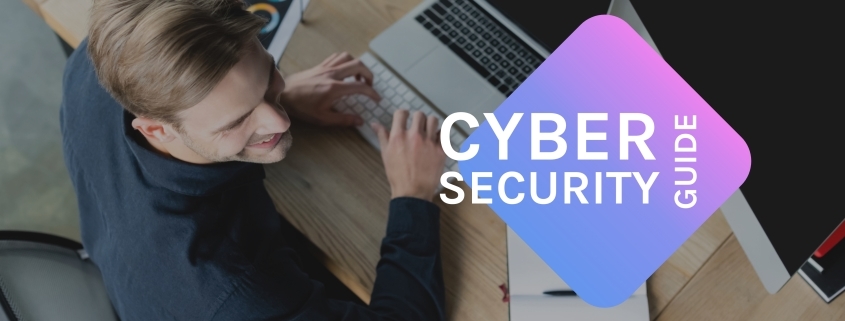
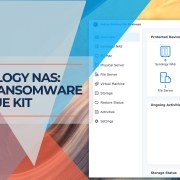
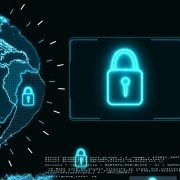
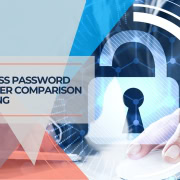







Leave a Reply
Want to join the discussion?Feel free to contribute!